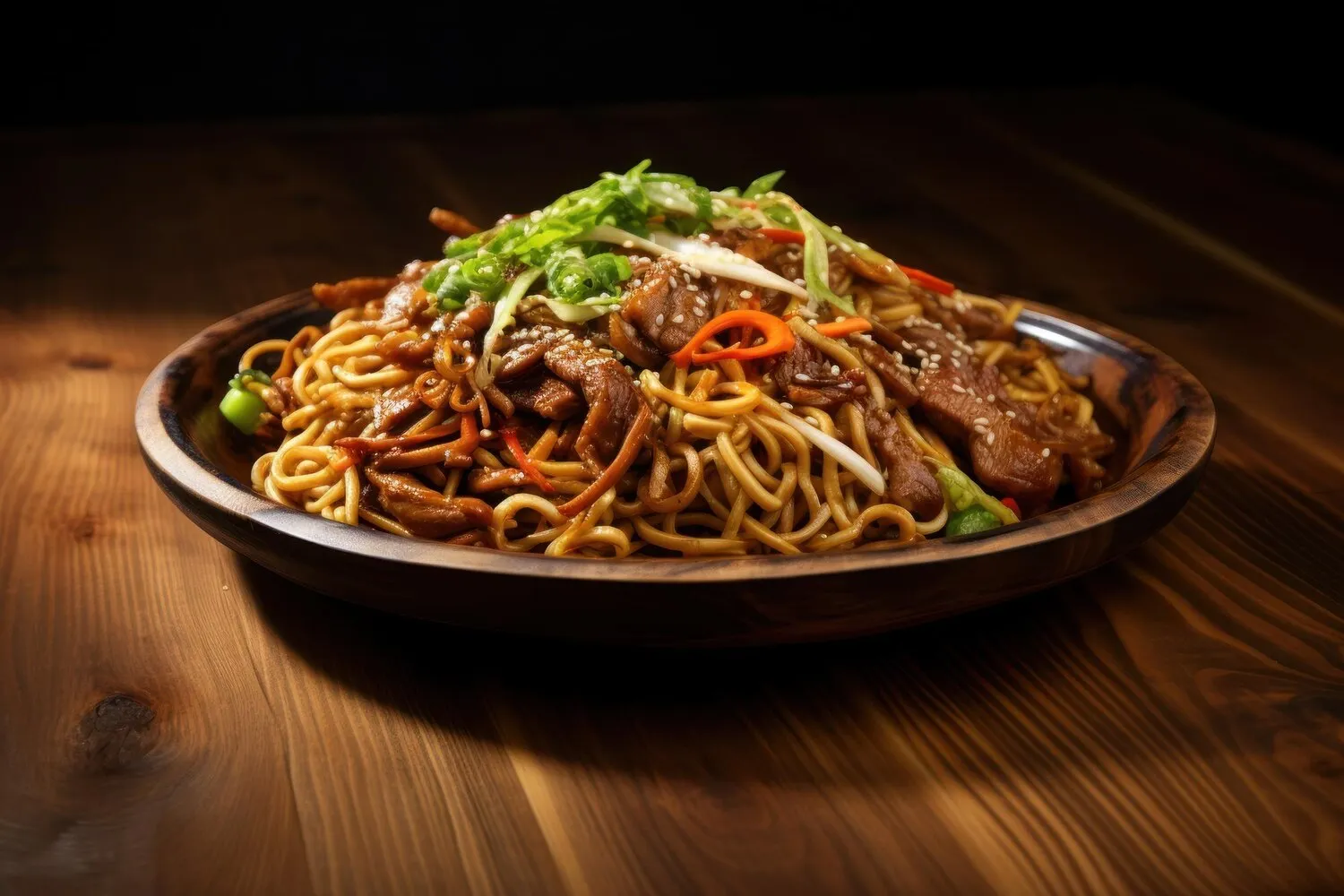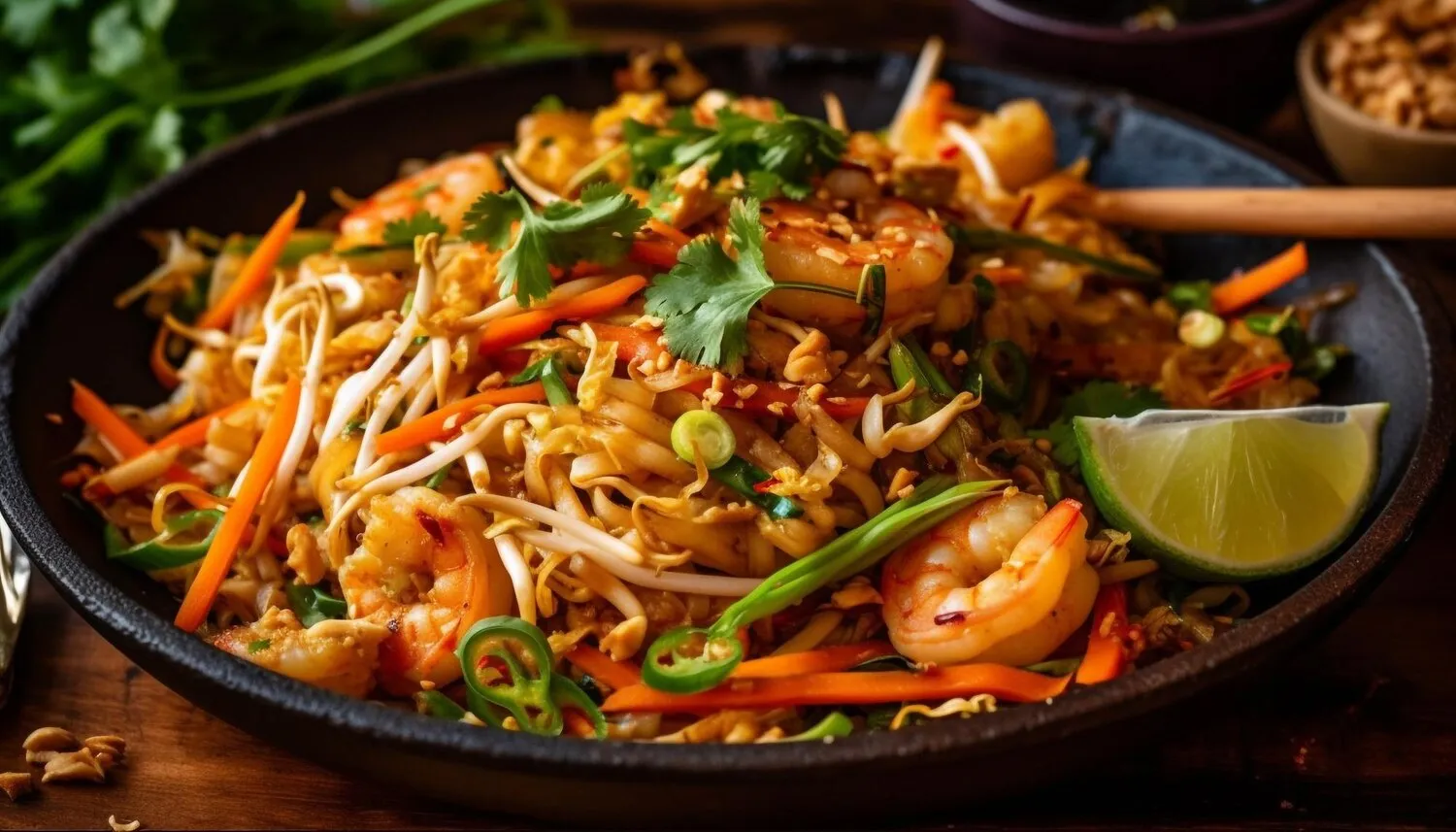
Yakisoba
Stir-fried noodles with vegetables and a choice of protein (chicken, beef, or shrimp).
Nutrition Facts
* The % Daily Value (DV) tells you how much a nutrient in a serving of food contributes to a daily diet. 2,000 calories a day is used for general nutrition advice.
Nagasaki Sushi
Yakisoba's origins are rooted in Chinese stir-fried noodle dishes, adapted and popularized in Japan during the post-World War II era. It emerged as a cheap and satisfying street food, capitalizing on the availability of wheat noodles and locally sourced ingredients.
Yakisoba holds a special place in Japanese cuisine as a popular and accessible dish enjoyed at festivals, street stalls, and homes. It represents a blend of cultural influences and a celebration of simple, flavorful ingredients.
Festival Food
Yakisoba is a staple at Japanese festivals (matsuri), where it's cooked on large griddles and sold from food stalls. The aroma of sizzling noodles and savory sauce fills the air, creating a festive atmosphere.
Everyday Meal
Beyond festivals, yakisoba is a common and affordable meal enjoyed at home and in casual restaurants. It's a versatile dish that can be customized with different vegetables and proteins to suit individual preferences.
Pan Yakisoba
Often served in a plastic tray called "Pan" Yakisoba can also be enjoyed as lunch or snacks in schools and community centeres.
Yakisoba offers a savory and umami-rich flavor profile, balanced with a touch of sweetness and tanginess from the yakisoba sauce. The dish showcases the textures of stir-fried noodles, crisp-tender vegetables, and the chosen protein.
The primary flavor component is the yakisoba sauce, a complex blend of soy sauce, Worcestershire sauce, oyster sauce, ketchup, and sometimes dashi or other umami-enhancing ingredients. This sauce coats the wheat noodles, creating a rich and savory base. Vegetables like cabbage, onions, carrots, and bean sprouts contribute sweetness and freshness. The protein, typically pork, chicken, beef, or shrimp, adds a meaty or seafood element. Benishoga (pickled ginger) and aonori (dried seaweed flakes) are common toppings that add a zesty and briny finish.
Noodle Preparation
Loosen the noodles before stir-frying to prevent them from clumping together. You can briefly microwave or steam them to make them easier to separate.
High Heat
Cook the yakisoba over high heat to achieve a desirable stir-fry effect. This will help the noodles and vegetables caramelize slightly, adding depth of flavor.
Sauce Timing
Add the yakisoba sauce towards the end of the cooking process to prevent it from burning and to allow the flavors to meld together effectively.
Toppings
Don't skimp on the toppings! Benishoga (pickled ginger), aonori (dried seaweed flakes), katsuobushi (bonito flakes), and Japanese mayonnaise add layers of flavor and texture.
Explore additional Noodles dishes and restaurants
Explore NoodlesDiscover top dining spots and culinary experiences in Itapema.
Explore ItapemaLearn more about the food culture, restaurant scene, and culinary heritage of Brazil.
Explore Brazil
